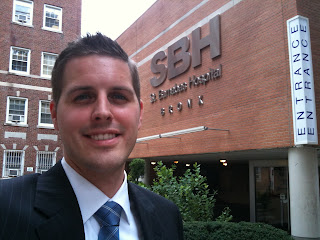The anticipation for this day was growing throughout the interview season as many students spoke highly of the hospital and potential opportunities well before I had a chance to see it for myself. Lehigh Valley Health Network incorporates a number of hospitals in the Lehigh Valley region of Pennsylvania. If the size of the lettering has anything to do with the caliber of the program, they are off to a good start.
Lehigh Valley Hospital
Our day started with a short presentation of the program and the large group of interviewees was divided to spread the masses. The interviewing half had four stations with two interviewers each. As there were so many stations and interviewing students, these sessions were not excessively long which left plenty of opportunity to ask questions and provide answers. With couches in every room, the tension was definitely less than most and certainly more comfortable than other programs offered. Between program director, assistants, clinical faculty and ancillary staff many of the common interview questions were exhausted rather quickly. I definitely appreciated meeting the majority of the teaching staff and being able to ask specific questions of those holding particular responsibilities.
At lunch we all sat in our formal-wear lining the tables of the cafeteria learning everything we could from current residents. It was a moment to relax and really determine if we felt as though the program would be a good fit for us personally. Satiated, we made our way to the shuttles for a tour of the medical facilities. State-of-the-art simulation labs that modeled patient rooms, healing decorations and quarantine-prepared spaces were among some of the unique features we observed. Much of the remodeling benefits both the patients and staff. Fellowship, research and altruistic opportunities were in abundance. The emergency medicine program monopolizes one facility and shares responsibility for another. Being accredited trauma centers, they see a number of pediatric and adult cases that smaller facilities may not.
Being this late in the interview season, it was somewhat difficult to maintain a sense of enthusiasm that was obvious at the onset. Nonetheless, this program definitely elicited a sense of excitement as it has so much education to offer including well-trained emergency physicians. I can only imagine that the upcoming residency match will bring them some of the strongest applicants from around the world.
Question of the Week
What do you like to do when you are not working?
Suggested Considerations






































